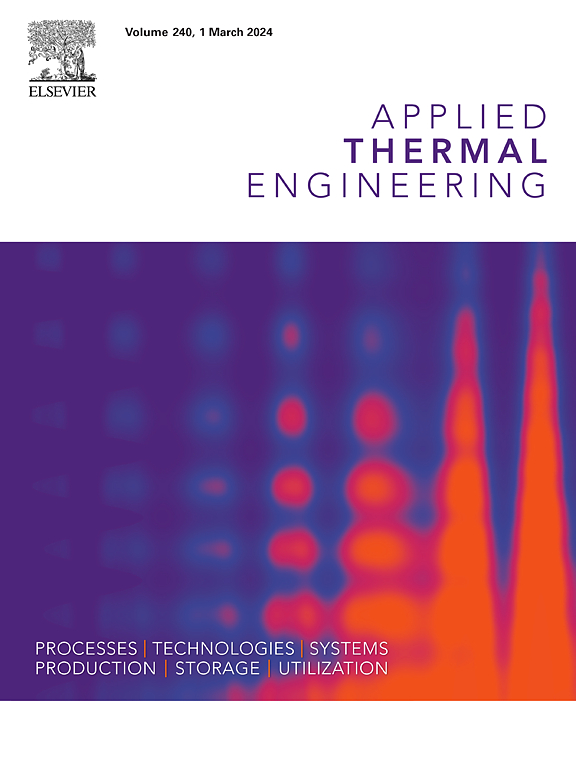Experimental and numerical analysis on influence of air staging in a tangential flow burner for pure ammonia combustion
IF 6.1
2区 工程技术
Q2 ENERGY & FUELS
引用次数: 0
Abstract
The combustion of pure ammonia has garnered significant attention due to the challenges involved in stabilizing flame. This study investigates pure ammonia flames using an innovative staged burner, with experiments conducted across three burner configurations: 2-stage, 3-stage, and 4-stage setups. In addition to the experimental work, comprehensive large eddy simulations (LES) are performed to assess the effects of thermal intensities, global equivalence ratios, and staging on pure ammonia flames. A wide flame stability range, with equivalence ratio spanning from 0.5 to 1.2, is achieved while maintaining minimal NO emissions and nearly zero ammonia slip. Key factors such as mixing, preheating temperatures, and local oxygen concentrations are found to play crucial roles in pure ammonia flame stabilization. For lower energy inputs, the 2-stage configuration exhibits optimal combustion performance with minimal NOx emissions (4.12 PPM/kW) and no ammonia slip. In contrast, the 4-stage configuration yields the lowest NOx emissions, reaching 0.8 PPM/kW. Furthermore, under comparable thermal intensities, variations in local oxygen concentrations significantly influenced NOx emissions, with the lowest NOx levels (143 PPM) observed in the 4-stage setup under stoichiometric conditions. At high thermal inputs with the 2-stage configuration, notable levels of N and NH species are identified at burner’s exit, contributing to reduced exit temperatures. Overall, the 4-stage configuration at high thermal inputs achieves the lowest NO flow rates (0.34 g/kW·hr), eliminates ammonia slip, and minimizes the N and NH radical species at the burner’s exit.
求助全文
约1分钟内获得全文
求助全文
来源期刊

Applied Thermal Engineering
工程技术-工程:机械
CiteScore
11.30
自引率
15.60%
发文量
1474
审稿时长
57 days
期刊介绍:
Applied Thermal Engineering disseminates novel research related to the design, development and demonstration of components, devices, equipment, technologies and systems involving thermal processes for the production, storage, utilization and conservation of energy, with a focus on engineering application.
The journal publishes high-quality and high-impact Original Research Articles, Review Articles, Short Communications and Letters to the Editor on cutting-edge innovations in research, and recent advances or issues of interest to the thermal engineering community.
 求助内容:
求助内容: 应助结果提醒方式:
应助结果提醒方式:


